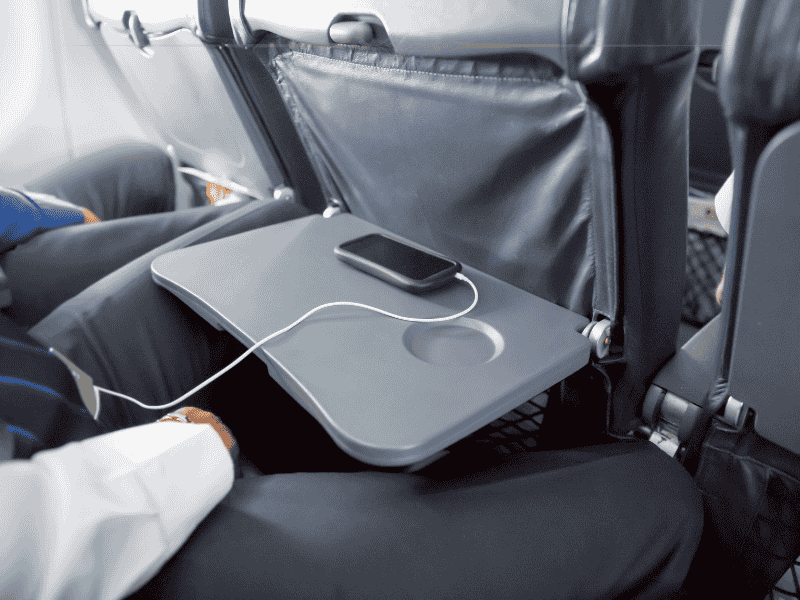Airline passengers are facing stricter enforcement of luggage regulations as aviation authorities implement enhanced security measures nationwide. A growing list of prohibited items—particularly those containing lithium batteries—has caught many travelers by surprise at security checkpoints. Understanding these restrictions has become essential for avoiding delays, confiscations, and potential flight denials.
New Regulations Target Common Electronic Accessories

The Transportation Security Administration has intensified its scrutiny of checked luggage contents following several concerning incidents aboard commercial flights. While most travelers are familiar with restrictions on liquids and sharp objects, many remain unaware of newer regulations targeting common electronic accessories.
“Many passengers don’t realize that the power bank they use to charge their phone during travel could actually prevent them from boarding if packed incorrectly,” explains a senior aviation security expert. The focus on these devices stems from their internal components rather than their everyday functions.
These regulations affect millions of passengers annually, with confiscations of prohibited items occurring daily at airports across the country. The implementation of enhanced ID verification procedures has further complicated the security screening process, creating additional pressure for travelers to arrive properly prepared.
Industry observers note that while these restrictions may create short-term inconvenience, they address legitimate safety concerns documented through actual in-flight incidents. The financial impact on travelers who lose expensive electronic accessories to confiscation adds another dimension to the importance of awareness.
Why Battery-Powered Devices Raise Safety Concerns
Aviation safety officials have identified lithium battery-powered devices as a particular area of concern due to their unique characteristics and potential hazards. These energy storage technologies, while revolutionary for portable electronics, introduce specific risks in the aviation environment.
The primary concern centers on the possibility of “thermal runaway”—a chain reaction within damaged or defective batteries that can lead to intense fires resistant to standard extinguishing methods. When such events occur in the pressurized cabin of an aircraft at cruising altitude, the consequences can be severe.
Unlike many other potential hazards, battery fires can start without external triggers, making them particularly troublesome from a safety perspective. Manufacturing defects, physical damage, or exposure to environmental extremes can all initiate the process, often with little warning.
The inaccessibility of cargo holds during flight compounds this risk. While cabin crews receive training to handle device fires in the passenger cabin using specialized equipment, similar incidents in checked baggage would remain undetected until potentially developing into major emergencies.
Recent statistics from aviation authorities indicate that battery-related incidents on commercial flights have increased proportionally with the proliferation of portable electronic devices. This trend has prompted regulatory responses aimed at mitigating these emerging risks.
Complete List of Items Banned from Checked Luggage
Transportation authorities have identified seven specific categories of items that passengers must never place in checked baggage due to safety concerns. Understanding these restrictions can prevent complications at security checkpoints.
1. Portable Power Banks
These ubiquitous charging accessories have become essential travel companions for many passengers seeking to keep smartphones and tablets operational during long journeys. However, the lithium-ion batteries they contain pose significant fire risks if damaged or short-circuited.
The compact nature of these devices belies their potential danger—modern power banks can store enough energy to maintain a significant fire if their internal safety mechanisms fail. The confined space and limited monitoring of aircraft cargo holds make this risk unacceptable.
Transportation officials require all power banks to remain exclusively in carry-on luggage, where potential issues can be detected and addressed immediately by cabin crew. This restriction applies regardless of the capacity or physical size of the charging device.
Travelers should note that this regulation also affects “smart luggage” with built-in charging capabilities. If batteries cannot be removed from such bags, the entire piece must be transported as carry-on rather than checked baggage.
2. External Battery Chargers
Distinct from power banks but presenting similar hazards, external battery chargers designed for specific devices fall under identical restrictions. These accessories, which typically connect to wall outlets before storing energy, contain the same potentially problematic battery components.
Professional photographers, videographers, and other travelers with specialized equipment often carry multiple external chargers for cameras, lighting equipment, and other gear. All such charging devices must remain in the cabin rather than checked luggage.
The distinction between these dedicated chargers and other electronic equipment sometimes creates confusion among passengers. However, the determining factor remains the presence of uninstalled lithium batteries capable of independent energy storage.
3. Spare Lithium Batteries
Beyond dedicated charging devices, individual spare batteries for electronic equipment face similar restrictions. These include replacement batteries for laptops, cameras, portable gaming devices, and other consumer electronics.
Transportation authorities make a clear distinction between batteries installed within devices and spare units. While most devices with installed batteries may be transported in either carry-on or checked baggage, uninstalled spares must always remain in the cabin.
This category includes both lithium-ion rechargeable batteries and primary lithium metal batteries. The latter, while less common in rechargeable consumer devices, appear in some specialty electronics and pose similar or even greater fire risks when damaged.
Passengers must ensure proper protection against short circuits by keeping spare batteries in original packaging, covering terminals with insulating tape, or using individual protective cases. This precaution prevents accidental electrical connections that could generate heat or sparks.
4. Battery Charging Cases
Smartphone accessories that combine protective cases with built-in backup power have gained popularity among travelers. Despite their integration with the phone when in use, these accessories are considered separate battery devices when packed for air travel.
These cases essentially function as form-fitting power banks and therefore face identical restrictions. When not attached to the device they’re designed to power, they must be transported in carry-on baggage with appropriate precautions against accidental activation.
Many travelers mistakenly assume that because these cases are designed for a specific device, they might face less stringent regulations. However, aviation safety protocols focus on the underlying battery technology rather than the specific application or form factor.
5. High-Capacity Professional Batteries
Certain specialized equipment requires batteries exceeding standard consumer power ratings. These high-capacity units, typically measured in watt-hours rather than milliampere-hours, face additional restrictions based on their increased energy density.
Batteries rated between 101 and 160 watt-hours occupy a regulatory middle ground. Passengers may transport up to two such batteries in carry-on luggage with airline approval. These commonly include extended-life laptop batteries and power sources for professional audio-visual equipment.
The regulations specify that these larger batteries must be for personal use during travel rather than commercial distribution. Quantities suggesting retail or wholesale purposes may trigger additional scrutiny or restrictions at security checkpoints.
Batteries exceeding 160 watt-hours generally cannot be transported on passenger aircraft without special permission and hazardous materials documentation—a restriction affecting primarily professional media production teams and specialized equipment operators.
6. Electronic Cigarettes and Vaping Devices
Electronic nicotine delivery systems present multiple safety concerns beyond their battery components. These devices combine energy storage with heating elements that could activate accidentally in the pressurized, temperature-fluctuating environment of cargo holds.
Numerous documented incidents involving these devices have reinforced the necessity of cabin-only transport, where potential malfunctions can be immediately addressed. The restriction applies to all varieties of these products regardless of size, capacity, or specific design.
Passengers should note that while these devices may be carried in the cabin, their use during flight remains universally prohibited. Additionally, any associated liquids must comply with standard limitations on carry-on liquids, generally restricted to containers of 3.4 ounces or less.
7. Certain Medical Devices with Lithium Batteries
Various medical devices powered by lithium batteries face similar restrictions, though with specific accommodations for passengers with health requirements. These include portable oxygen concentrators, continuous positive airway pressure (CPAP) machines, and certain mobility aids.
Travelers requiring such equipment should contact their airline well before their departure date to understand specific policies and requirements. While many carriers permit necessary medical devices in the cabin beyond normal carry-on limitations, they typically require advance notification.
The growing array of wearable medical technology presents new considerations for travelers. Insulin pumps, heart monitors, and other health devices with battery components generally should remain with the passenger rather than in checked luggage whenever possible.
Recent Incidents Highlight Potential Consequences
Several troubling events in recent months have underscored the importance of battery safety regulations. In January 2025, passengers aboard an international flight experienced a frightening situation when a device in the cabin began emitting smoke and heat. The quick response of trained crew members prevented escalation, but the incident resulted in multiple injuries requiring medical attention.
This event followed similar occurrences throughout 2024. In November, passengers on a domestic flight were evacuated after a smartphone malfunctioned and began generating extreme heat. Earlier in the year, another flight diverted to an unscheduled landing when crew detected smoke from an overheating mobile device.
Aviation safety experts note a crucial common factor across these incidents—all occurred in the passenger cabin where they could be addressed immediately. Had similar malfunctions happened in the inaccessible cargo hold, detection and intervention would have been significantly delayed or impossible.
The pattern of these events provides concrete evidence supporting current regulations. While incidents in the passenger cabin can be managed with fire containment equipment and trained personnel, similar occurrences in checked baggage would likely go undetected until developing into serious hazards.
Understanding Battery Fires
The technical term “thermal runaway” describes the primary risk associated with lithium battery devices. This process occurs when a battery cell experiences uncontrolled temperature increase, potentially leading to fire, explosion, or the release of toxic gases.
Multiple factors can trigger this dangerous chain reaction. Physical damage to batteries can compromise internal safety features designed to keep reactive materials separated. Exposure to extreme temperatures—particularly heat—can accelerate chemical reactions within the battery beyond safe thresholds.
Manufacturing defects, though increasingly rare with quality control improvements, remain a concern. Even microscopic metal particles introduced during production can eventually create internal short circuits after repeated charging cycles. Overcharging, particularly with aftermarket or counterfeit equipment, can push batteries beyond their design parameters.
Water damage presents another hazard, as moisture can compromise battery integrity and introduce conductive elements across components meant to remain isolated. Finally, older devices often experience degraded internal separators and other safety features, increasing failure risks.
Once thermal runaway begins, it typically progresses rapidly and generates intense heat, with temperatures potentially exceeding 1,800 degrees Fahrenheit—sufficient to ignite nearby flammable materials and potentially spread to adjacent devices.
Navigating Security With Battery-Powered Devices
Travelers can take several proactive steps to ensure compliance with these regulations and maintain safety during air travel. Most importantly, all spare batteries, power banks, and similar items must be packed exclusively in carry-on luggage rather than checked baggage.
When traveling with these devices, precautions against accidental activation or short-circuiting become essential. Original packaging provides ideal protection, but alternatives include dedicated battery cases, individual plastic bags, or insulating tape covering electrical contacts.
Positioning batteries away from metal objects like keys, coins, or jewelry prevents completion of electrical circuits that could generate heat. Additionally, devices should be completely powered off rather than in sleep or standby mode when packed for travel.
Environmental exposure represents another concern. Travelers should avoid leaving electronics in direct sunlight or hot vehicles before flights. Similarly, devices showing signs of damage, swelling, or unusual heat during normal operation should be evaluated by professionals before air travel.
Security personnel are specifically trained to identify prohibited items, and discovering restricted batteries in checked baggage will trigger additional screening. The latest generation of screening equipment can detect lithium batteries even when concealed within other items, making compliance both safer and more efficient than attempted circumvention.
International Travel Considerations
While domestic regulations maintain consistency across U.S. airports, international travelers should note that battery restrictions may vary somewhat between countries. However, International Civil Aviation Organization standards have largely harmonized these safety measures globally.
Most major international carriers and aviation authorities worldwide have adopted similar positions regarding lithium batteries. Nevertheless, slight variations in implementation or enforcement may occur, particularly regarding watt-hour limits and quantity restrictions.
Travelers connecting between international and domestic flights should ensure their battery-powered items comply with regulations in all countries along their itinerary. When rules conflict, following the most restrictive standard helps avoid complications during the journey.
Language barriers sometimes complicate understanding of local regulations. International travelers can benefit from downloading or printing relevant battery transportation guidelines in the local language of their destination. Many aviation authorities provide multilingual resources specifically for this purpose.
Future Developments in Aviation Safety
The landscape of air travel safety continues to evolve alongside technological advancement. As manufacturers develop new battery technologies with improved safety profiles, regulations may eventually adapt accordingly.
The aviation industry and regulatory bodies maintain ongoing research into battery fire detection and containment systems for aircraft cargo holds. Future developments may eventually allow safer transportation of certain currently restricted items, though such changes would follow rigorous testing and certification.
In the meantime, passenger education remains crucial to safety. Aviation authorities continue expanding public awareness campaigns regarding battery safety, with particular emphasis on reaching infrequent travelers who may be less familiar with current restrictions.
The tension between passenger convenience and aviation safety drives innovation in both sectors. Device manufacturers increasingly consider air travel compatibility in product design, while airlines explore new services to address travelers’ power needs during journeys.
For now, understanding and following these regulations remains essential for safe and efficient air travel. By properly managing battery-powered devices, passengers contribute to overall flight safety while avoiding the frustration and financial loss of confiscated items at security checkpoints.




